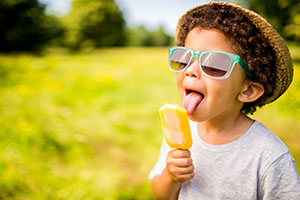Good Growing
Summer 2023
Kids Thrive on Structure and Routines
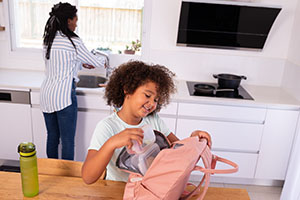 Routines and rituals help kids feel safe and secure. From the day they're born until they leave home, children benefit from structure and stability.
Routines and rituals help kids feel safe and secure. From the day they're born until they leave home, children benefit from structure and stability.
For babies, routines teach them to trust that their caregivers will respond to their needs. We soothe them when they're upset and feed them when they're hungry. We ensure they're always clean and comfortable. We stick to a regular sleep schedule so they're well rested. We provide lots of affection, one-on-one play and fresh air so their brains and bodies develop properly.
For young children, structure and routines help them gain self-confidence. Plus, families run more smoothly with a morning breakfast ritual, a getting-to-school routine, age-appropriate chores, shared family dinners and regular bedtimes. Research confirms that when children have strong routines at home, they have an easier time in school with both learning and friendships. Kids who feel grounded in their home life can better regulate their emotions and cope with transitions. Growing up with structure also leads to greater resilience, which helps kids bounce back from sad or tough events and become even stronger.
For tweens and teens, solid routines make it easier for them to adjust to the major transition from childhood to adulthood. Sudden changes in hormones along with rapid growth can make things feel rocky. A stable home life can help everything feel smoother and steadier. And while limits on screen time are a must for kids of all ages, tweens and teens are extra vulnerable to the negative effects of social media. Though they may complain about screen-time limits (such as no phones during family meals and sleeping hours) they'll benefit from these and other rules. Ultimately, a stable foundation equips tweens and teens for more responsibilities and greater independence. While our job is to provide a safe 'nest' for our kids, at the same time we're preparing them to fly!
It's also important to note that while routines benefit everyone, they're especially helpful for kids with autism, ADHD and anxiety. These children often need consistent daily schedules and comforting rituals to feel their best.
Parents also benefit from solid routines. Healthy patterns reduce stress levels and ease power struggles among family members.
Of course, family routines evolve as children get older. Schedules get busier, kids develop their own social lives and life is often full of twists. But rather than giving up the structure and routines you've created, adjust them to meet your family's needs. They're too valuable to lose!
Learn more about positive parenting.
Take a Pass on Energy Drinks
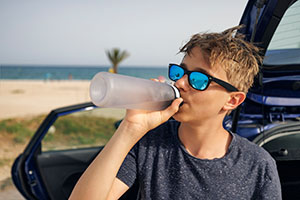 Energy drinks are advertised as being healthy, hydrating and energizing. But in truth, they're often none of these things. While energy drinks seem to be everywhere, they're not a wise beverage choice, especially for kids. The American Academy of Pediatrics (AAP) advises that children and teens should not consume any energy drinks. Besides sugar, these drinks can contain a lot of caffeine, which the AAP says children under 12 should completely avoid. Plus, many energy drinks contain other strong stimulants besides caffeine whose health effects on children are unknown.
Energy drinks are advertised as being healthy, hydrating and energizing. But in truth, they're often none of these things. While energy drinks seem to be everywhere, they're not a wise beverage choice, especially for kids. The American Academy of Pediatrics (AAP) advises that children and teens should not consume any energy drinks. Besides sugar, these drinks can contain a lot of caffeine, which the AAP says children under 12 should completely avoid. Plus, many energy drinks contain other strong stimulants besides caffeine whose health effects on children are unknown.
It may take some extra effort to avoid energy drinks because they're packaged and marketed to appeal to kids. And the culture of youth sports often includes drinking energy drinks before and during competitions. Remember that water is the best choice for quenching thirst and staying hydrated. Along with good nutrition, making water your go-to drink is a healthy habit for life!
Learn more about energy drinks and children.
Preventing Constipation
 To feel their best, kids need to have healthy bowel movements (BMs). This means pooping easily every day or two without strain or pain. But sometimes, kids become constipated. According to the American Academy of Pediatrics, about 1 in 20 pediatrician visits are because of constipation, which can cause belly discomfort.
To feel their best, kids need to have healthy bowel movements (BMs). This means pooping easily every day or two without strain or pain. But sometimes, kids become constipated. According to the American Academy of Pediatrics, about 1 in 20 pediatrician visits are because of constipation, which can cause belly discomfort.
It's important to prevent constipation. Most kids can avoid getting backed up by drinking lots of water and eating plenty of fiber. Most fruits and vegetables contain fiber, as do whole grains. You can also limit foods known to cause constipation such as cheese (or too many dairy products), white rice, white flour and bananas.
It's not unusual for kids to purposely hold back their stools (poop). During potty training, power struggles can develop, and kids may refuse to go. Or they might avoid going because they don't want to stop playing. For some kids, constipation problems begin when they start school because they're afraid or embarrassed to go poop in the school's bathroom.
As they grow up, kids naturally become more private about their BM habits. So be sure your child knows to tell you if they're not pooping often enough. And be sure your child knows that stools should be soft and easy to pass — not hard and painful. If there's a problem, take them to see their doctor, who may suggest a fiber supplement, medicine or other treatment.
Learn more about healthy bowel movements.
Heat Rash
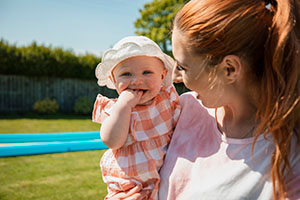 A heat rash is a fine, pink rash caused by blocked sweat glands. Also known as 'prickly heat,' heat rashes are most common in hot and humid weather or after lots of sun. These rashes can also be caused by skin ointments or hard exercise. Heat rashes appear mainly on the neck, chest and upper back, and may feel itchy or prickly.
A heat rash is a fine, pink rash caused by blocked sweat glands. Also known as 'prickly heat,' heat rashes are most common in hot and humid weather or after lots of sun. These rashes can also be caused by skin ointments or hard exercise. Heat rashes appear mainly on the neck, chest and upper back, and may feel itchy or prickly.
Heat rashes can be treated at home. Try a cool bath with no soap, then allow the skin to air dry. Or place a wet, cool washcloth on the skin for 5 to 10 minutes. If the rash is itchy, try calamine lotion or a 1% hydrocortisone cream. Keep your child cool by dressing them in lightweight clothing and running a fan inside.
A heat rash itself does not cause a fever. However, call your child's doctor if a fever or another sign of infection develops, or if your child looks or acts sick.
Learn more about heat rash.
Talking About Puberty
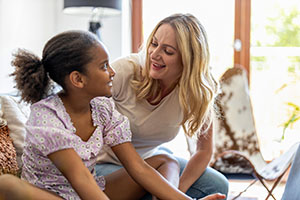 Before puberty begins, let your child know it's always OK to come to you with questions about the physical and emotional changes that will happen. Think of puberty as a conversation topic that starts at an early age and continues over the years. Even if your child learns about puberty at school, talk about it at home, too. This shows you're interested and available, and allows you to fill in any information gaps. Reassure your child that while the timing of puberty can vary a lot, everyone goes through it.
Before puberty begins, let your child know it's always OK to come to you with questions about the physical and emotional changes that will happen. Think of puberty as a conversation topic that starts at an early age and continues over the years. Even if your child learns about puberty at school, talk about it at home, too. This shows you're interested and available, and allows you to fill in any information gaps. Reassure your child that while the timing of puberty can vary a lot, everyone goes through it.
Seattle Children’s partners with Great Conversations to offer ‘The Chat,’ a lively course on puberty for parents and kids. These class discussions are a great 'roadmap' to guide your family conversations.
Safety During Hot Weather
 Hot weather can sometimes catch us off guard in the Pacific Northwest. Higher temperatures raise a child's risk of injury and death from three hazards: window falls, hot cars and drowning.
Hot weather can sometimes catch us off guard in the Pacific Northwest. Higher temperatures raise a child's risk of injury and death from three hazards: window falls, hot cars and drowning.
Prevent Window Falls
Every year when the weather warms up, children (especially those under age 7) are injured or even killed when they fall out of windows. How does this happen? One common scenario occurs when screened windows are open. A child leans or pushes against the screen, popping it out of the window frame — and the child falls out. For windows where there's a fall risk, install child-safety window stops that prevent windows from opening more than 4 inches. Use stops designed to be easily removed by an adult in case of emergency. Learn more about preventing window falls.
Never Leave a Child Alone in a Car
Air temperatures inside a car can heat up to deadly levels within minutes. A child's body heats up much faster than an adult's does, and cracking a window isn't enough to protect a child. Even if your child is sleeping, take them with you. Set up a reminder system so you never leave your child alone in the car by mistake. And if you see a child alone in a locked car, call 911. Learn more about the dangers of leaving a child alone in a car.
Stay Vigilant with Water Safety
Drowning is the number-one cause of injury-related death for children ages 1 to 4. Constant supervision is a must. Keep your full attention on young children when they're in or near the water, staying within arm's reach. For children of all ages, ensure that life jackets fit properly and are U.S. Coast Guard-approved. Swimming lessons are vital; be sure your child learns to swim as early as possible. And remember that drowning is a leading cause of death for older kids and teens, too. They must understand and follow strict water-safety rules. Learn more about water safety.
Plan ahead, use safety gear and supervise closely to keep your child safe this summer — and all year around!
Get more summer safety tips.
